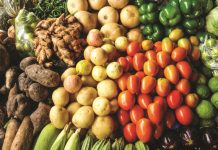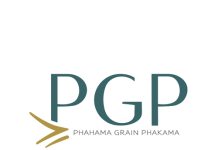Amidst an international deterioration in global food security for the third consecutive year, South Africa’s position out of 113 monitored countries has improved from 70th in 2021 and 69th in 2020 to 59th in 2022. This year the country again ranked at the top out of 28 countries in Sub-Saharan Africa.
The South African score increased from 57,8% two years ago to 61,7% in the most recent Global Food Security Index (GFSI) sponsored by Corteva Agriscience. Within Africa, the country is followed by Algeria in 68th position, Egypt (77th), Kenya (82nd), Ghana (83rd), Senegal (86th), Botswana (87th), Rwanda (88th), Burkina Faso (89th), Tanzania (90th) and Benin (91th).
A global overview
Leading the world in food security currently is Finland with 83,7%, outperforming Ireland (81,7%) who topped the global index in 2021. Other leading countries in food security are Norway (80,5%), France (80,2%), the Netherlands (80,1%), Japan (79,5%), Canada (79,1%), Sweden (79,1%), the United Kingdom (78,8%), Portugal (78,8%), Switzerland (78,2%), Austria (78,1%) and the United States (78%).
Scoring less than 45%, the most threatened countries indexed in 2022 are Ethiopia (44,5%), Angola, Zambia, Chad, Congo (Democratic Republic), Sudan, Venezuela, Nigeria, Burundi, Madagascar, Sierra Leone, Yemen, Haiti, and Syria (36,3%).
Conducted by Economist Impact (The Economist Group), the eleventh GFSI considered affordability, availability, quality and safety, as well as sustainability and adaptation as the four pillars for food security improvement or deterioration.
Availability, the GFSI’s second pillar, has been adjusted to start with food production, capturing more producer-focussed measures on accessibility to agricultural inputs. Access to finance and financial products from the affordability pillar has been moved to the availability pillar, which is producer-related.
The fourth pillar, previously called ‘natural resources and resilience’, has been renamed ‘sustainability and adaptation’. Given how important biodiversity is to the agricultural sector, soil organic content has been added to help measure the health of the land and assess land degradation.
‘Climate finance flows, environmental economic accounting implementation and sustainable agriculture have been added as new indicators to measure political commitment to adaptation more comprehensively. A new measure of pest infestation and disease has been added to the new composite indicator of disaster risk management as a way of including mitigation policies,’ reported Economist Impact.
Affordability gauges consumer ability to buy food, vulnerability to price shocks and the existence of programmes and policies to support consumers during food security shocks. Availability measures agricultural production and on-farm capabilities. The risk of supply disruption, national capacity to disseminate food and research efforts to expand agricultural output are also measured.
Variety and nutritional quality of average diets, and food safety are expressed as quality and safety performance, while sustainability and adaptation are assessing the exposure to climate change, natural resource risks and the adaptation to these risks. The GFSI is based on a dynamic benchmarking model made up of 68 qualitative and quantitative food security drivers.
Drivers of food insecurity
Economist Impact confirmed that the scores in the 2022 GFSI reflected a fragile global food system. ‘It is under immense pressure and facing some of its worst outcomes ever.’ Food prices and hunger are hitting record highs, while affordability is plummeting as shocks like the COVID-19 pandemic, armed conflict, and climate change compound systemic stresses. These stresses and shocks pose threats to food security and may become worse.
While global food security remains imperative, the GFSI confirms that the global food environment is deteriorating. Since hitting a peak in 2019, the GFSI has declined mainly due to skyrocketing food prices and hunger on an unprecedented scale.
Based on eleven years of data, the index highlights that the food system has been shocked by factors such as the COVID-19 pandemic and high commodity prices in the period from 2020 to 2022, showcasing concerning fragility. These shocks exacerbated the food system issues that are threatening food security and food system resilience.
Conflict is one of the main drivers of food insecurity, as experienced by the GFSI 2022 – armed conflict is strongly linked to lower food security scores. Conflict negatively affects almost every aspect of the food system, from production, harvesting, processing and transport to input supply, financing, marketing, and consumption. The GFSI shows that armed conflict most negatively impacts supply-chain infrastructure, which is key to moving food from farm to fork.
The research team noted that stakeholders in the globally interconnected food system needed to work even closer in managing these risks to achieve resilience and sustainability. Stakeholders such as governments, multilaterals and non-governmental organisations (NGOs) have to add to the momentum.
‘The 2022 GFSI shows a clear path for other stakeholders, including businesses, producers, and local groups. By working together with governments and NGOs, they have already made inroads on adaptation policy, innovation, and finance.’
Some global efforts prevented the overall GFSI from falling lower than its current level. These include the adoption of 1) sustainable policies, particularly in climate finance flows; 2) increased policy commitments to technologies; 3) access to agricultural technology; 4) education; and 5) resources, related to producer inputs. Producers enjoy improved access to finance, including diversified financial products to help provide crop insurance that is essential to cover economic, financial and climate shocks.
A strong signal is sent to businesses by government efforts to coordinate risk management and introduce environmental economic accounting which will adopt new operating frameworks and reporting requirements, boosting sustainable and resilient agriculture.
The 2022 GFSI shows clear gaps and challenges in managing the stress on natural resources. Climate change is a threat multiplier. The GFSI shows that access to water is at risk as nations endure warmer temperatures. Irrigation infrastructure – defined as the percentage of cultivated agricultural area equipped for irrigation – was the lowest scoring of all measures on the index.
 Five regions were covered by the 113 countries included in the index – Asia Pacific, Europe, Latin America, the Middle East and Africa, and North America. The GFSI 2022 model and the global research report and methodology are available online by clicking the QR code.
Five regions were covered by the 113 countries included in the index – Asia Pacific, Europe, Latin America, the Middle East and Africa, and North America. The GFSI 2022 model and the global research report and methodology are available online by clicking the QR code.



















